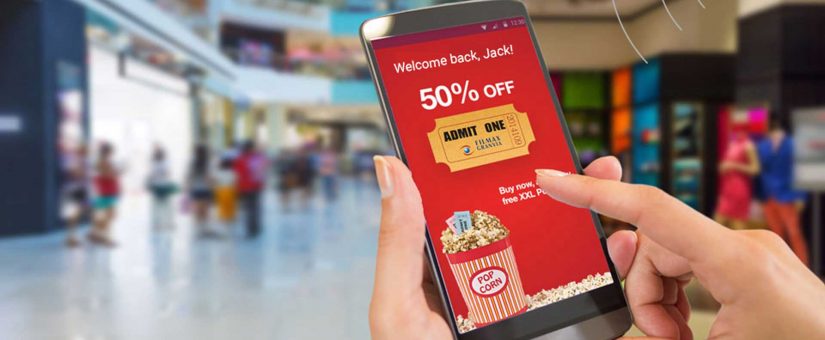- Table of Content
- 1. What is location-based marketing?
- 2. Location based marketing: Geo-fencing
- 3. Distinctive Benefits of Location-Based Marketing
- 4. How to Use Location-based Marketing in 2021 And Beyond
- 5. What industries are ideal for Location-based marketing?
- 6. Location-based marketing: What businesses to avoid
- 7. What new for location-based marketing?
- 8. Conclusion
Table of Content
1. What is location-based marketing?
A location-based marketing strategy involves using the current or once visited the location of the mobile device, specifically a smartphone, to inform the owner of the device. Correspondingly, this Information is about deals or special offers from businesses nearby.
Generally, how this happens is, notifications are sent to smartphones to inform the user. More often than not, notifications comprise information about a local business deal or special offer. Additionally, as part of location-based marketing, business owners send discount coupon codes by way of text message to smartphones to provide an incentive to purchase.
Results have shown that engaging with potential customers based on location tends to hugely increase the engagement with smartphones. The main benefit of targeting smartphone uses based on the location is its added relevancy. Also, another key benefit is the text messages could be more useful to uses.
Sometimes location-based marketing is also referred to as Geomarketing or proximity marketing.
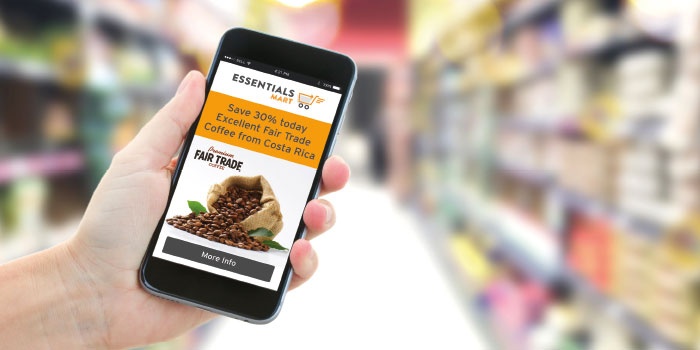

2. Location based marketing: Geo-fencing
When it comes to location-based marketing, you have to know what geofencing does to the whole process. To put it simply Geo-fencing involves, sending a series of triggers when a smartphone device entered a predetermined location. These triggers include coupon codes, notifications, security alerts and so on.
Geo-fencing uses GPS, Wi-Fi, RFID or cellular data to elicit a pre-programmed action when a smartphone enters or exits a boundary virtually set up revolving a geographical location referred to as a geo-fence. Likewise, if a person enters or is present within a target geo-fence, they will see your message or advertisement.
3. Distinctive Benefits of Location-Based Marketing
Business organisations and brands are now appreciating the dynamic qualities of location-based marketing. Many businesses have reported to having growth in their customer foot-falls due to the effective use of location-based marketing techniques. For an established business establishment or a brand, planning to target local clients, location-based marketing is the tool to look at without much thought.
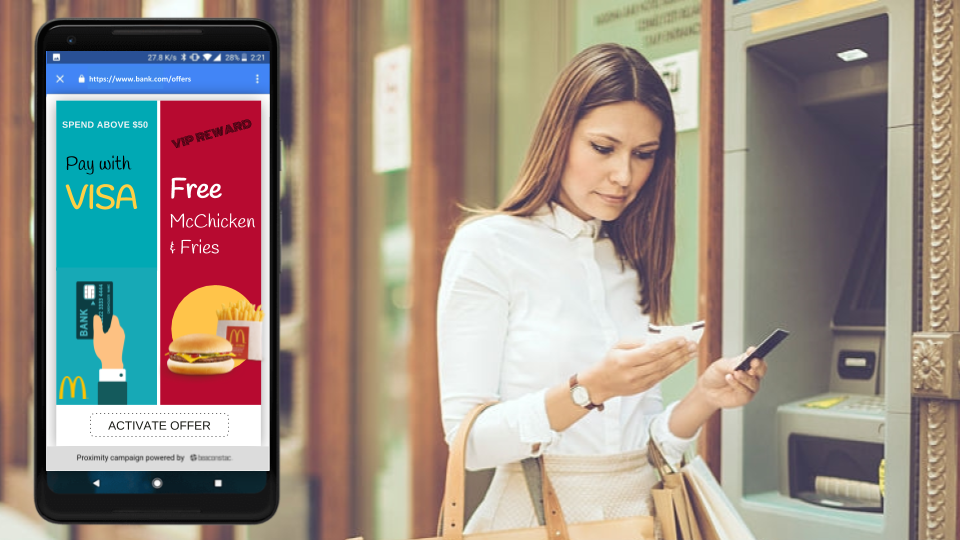

3.1. Generate high-quality leads
Google and Facebook are collecting all kinds of customer data. Hence, targeting ads has become precise. Also, brands are using SEO tools that are quite advanced to reach customers.
But in 2021, location-based marketing will be the most strong and fruitful method of targeting. Here’s why
In reality, people display certain interests or use a certain variety of content. That is called passive data. However, where they visit, shows their real interests. Especially in 2021, due to the effects of the Covid- 19 pandemic, going out has unique importance.
By specifically targeting users based on their location history, you are filling–in when these particular users are really active and ready for action.
For example, let’s say you want to target specific customers who are keen on books or keen on visiting a bookstore. Practically, you can do this by seeing which customers liked a specific book or an author page. Further, you can target customers who went to a bookstore recently. The latter example will give better leads ready for action. For one thing, location based marketing is a strong and sure targeting strategy.
3.2. Captivating customer’s you would not have targeted otherwise
This is a key benefit of location-based marketing. There will be many surprises here. Surprises by way of who is really interested in your product.
When customer data is used to customise your target market, in reality, you can leave out a few potential leads. With the use of geo-fencing, three’s no chance of leaving out a prospect. In other words, when a person is within your city, that person will see the advertisement.
4. How to Use Location-based Marketing in 2021 And Beyond


For businesses, 2021 presents a unique set of challenges but also a world of opportunity. Local businesses need to make use of location-based marketing if they want to stay competitive in a fierce marketplace. Noted below are a few selected tips on how to effectively capitalise on the use of use location-based marketing in 2021 and beyond.
4.1. Make customers feel safe and secure
For any business revolving around customer interacting, this is probably the most important guideline for 2021. Business organisations have found distinctive ways to make sure customers are safe. In fact, location-based marketing can be really helpful in this regard.
Let’s see the following example. Tom generally eats out at restaurants and a regular at his restaurant near his home. However, since the Covid-19 pandemic, Tom has not eaten out due to fears of safety.
In reality, Tom need not worry too much now. The restaurant regularly sanitizes and takes extra care by way of taking safety precautions. Moreover, if the restaurant can tell customers like Tom, not to worry about the safety aspect, they can get more business from customers similar to Tom who have given safety a priority. However, if the restaurant uses location-based marketing, it can tell customers their restaurant is safe and secure.
By employing geofencing, similar restaurants can run campaigns highlighting safety. This can make their customers feel secure and safe. This could be a great boost to help the restaurants get back on their feet during these troubled times where people think twice before venturing out on their own.
4.2.To customers who are nearby offer surprise discounts


When a customer is almost near your business (restaurant or a supermarket), you could offer a slight push to remind about an offer. Also, you could have a QR code outside the business that gives customers who scan the QR code, a discount on products within your store.
People who are already nearby will want to try their luck. It is ok if the walk-in customers receive even a small discount. As a result, customers will want to enter your business and see what’s worth inside.
5. What industries are ideal for Location-based marketing?
Products or brands with a physical presence in a location are ideal for location-based marketing. Moreover, brick and mortar businesses can really benefit from geotargeting marketing campaigns because analytics and location-based marketing companies are in a position to geofence locations to target the consumers or audiences visiting their designated locations.
Location-based marketing companies create audiences based on real-world visits, rather than follows and likes on social media, for their geo-targeted campaigns. Using this method, location-based marketing companies make sure they are targeting the captive audience at the correct time while delivering a timely and relevant message.
In reality, what types of businesses should make use of geotargeting campaigns to garner successful results? The list comprises of food and dining businesses, retail businesses, supermarkets and speciality stores selling unique products. The list of potential businesses is wide and varied. Here are a few examples below.
5.1. Car sales
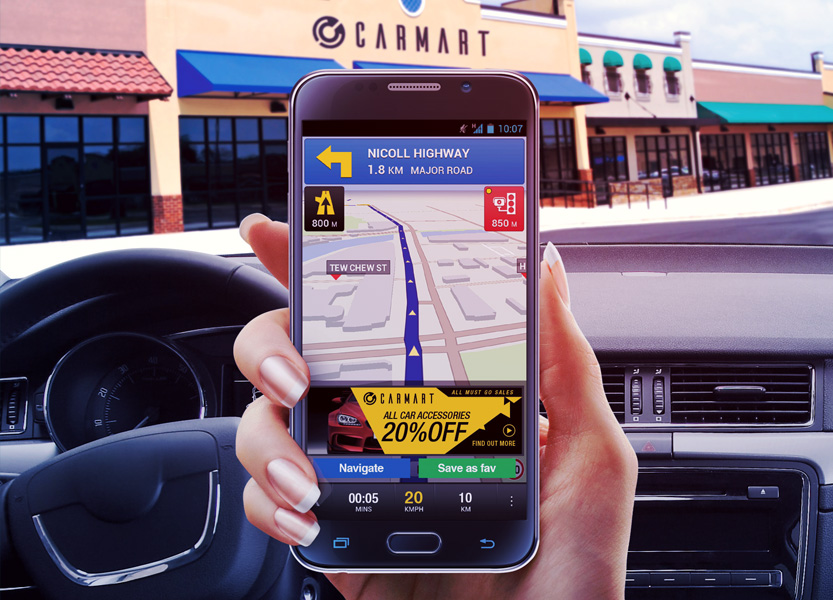

Car sales are spread far and wide in any city. Also, there are specific areas and towns which have a series of car sales spread along with each other. In essence, car sales can benefit immensely from geo-targeting marketing campaigns, especially geo-conquesting, that have the capability to reach their competitor’s customers. The big-ticket price tag of a vehicle, a retail footprint that is large and distinct purchase cycle require marketers to think smart to reach potential car buyers during their last phase of visiting car sales.
5.2. Seasonal businesses and pup-ups
Impactful geotargeting campaigns could also be used for seasonal businesses when they meet the correct criteria. Think of Christmas seasonal sales and Valentine’s Day.


Marketers of these businesses use previous year’s audiences seen at their locations to target advertisements to the same group enticing repeat visits the following year. Professional sports teams use location based target marketing to reach the audiences that come to the venue each season to entice future repeat purchasing of tickets. The annual IPL cricket tournament is a good example of this exercise. Same way annual horse races and annual motor racing events. Similarly, trade shows that takes places every year like the Architects exhibition, hotel show is a good platform to try out this type of marketing activity which has a business-to-business audience.
5.3. Tourism boards and associations
Tourism boards and associations can effectively use geo-targeted marketing campaigns to promote a location. For example, a location-based marketing company could promote tourism in Nuwara Eliya can convince visitors to Hikkaduwa to visit Nuwera Eliya instead next year around.
5.4. Specialist product companies.
In this scenario, take for example a company selling organic products located in, for example, Colombo 7. As such businesses are not cluttered in a certain area, the organic product company could effectively use location based marketing to harness customers to its business.
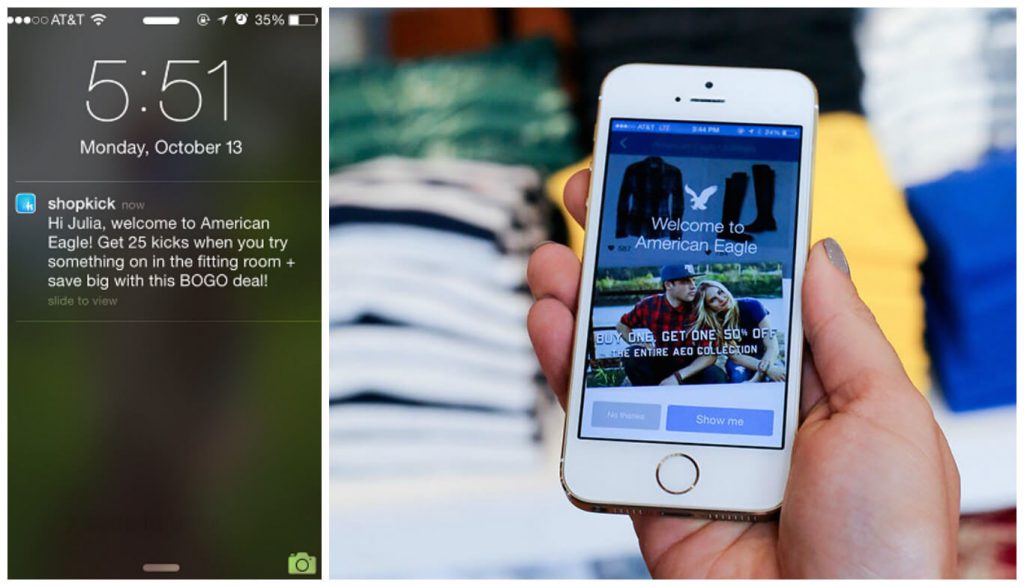

6. Location-based marketing: What businesses to avoid
Locations-based marketing has its downside like any other marketing strategy. The negatives can be in both quantity and quality of available data.
6.1. Locations that do not have sufficient scale
The most common pitfall to creating a successful location-based marketing campaign is the sufficient lack of scale to create a meaningful audience. This challenge can be attributed to choosing a singular location without adequate footfall to analyze. Also, events that last a single day makes it challenging to capture the correct audience.
In essence, creating an effective location-based marketing campaign is tough when businesses are merged closely together or on the same building on top of each other. This mostly applies to multi-user buildings and malls. Also, creating an audience for an office located on the 15th floor of a high-rise building is a tad challenging. In such a scenario analytics companies and location-based marketing companies can differentiate the difference who is a shopper, and who is an office worker and who lives in the building.
6.2. Products or services available at every nook and corner
Say for example a company is selling an expensive top-notch brand of hair care product. If this product is only available at selected high-end salons, in such a scenario location-based marketing would work wonderfully. On the other hand, if the hair care product is available at supermarkets and all types of salons, then this marketing strategy will not work.
Additionally, products that are common or almost generic which is available at any location like soft drinks, bubble gum and certain types of pet food don’t benefit from location-based data insights. The marketers of such products should other methods like demographics to reach their intended target audience more efficiently.
7. What new for location-based marketing?
The rollout and launch of 5G will create gigantic proportions of supremely accurate location data. This together with millions of new sensors being put to use through the internet of things. It is a fact that 5G towers must be bunched together more closely than the present set of mobile phone towers. This close clustering translates to mobile phone carriers can triangulate locations with a high degree of correctness than they can do presently today. Also, keep in mind 5G also brings faster download and upload speeds, which will ignite the use of more internet-connected sensors across a wide variety of businesses.
When these millions of sensors come online, they will generate other than location data more valuable data insights. Data such as product usage, life cycle and consumption are distinct possibilities. Finally, advertisers will hold their ad spend accountable needing evidence that their ad campaign brought in new sales and walk-in foot traffic.
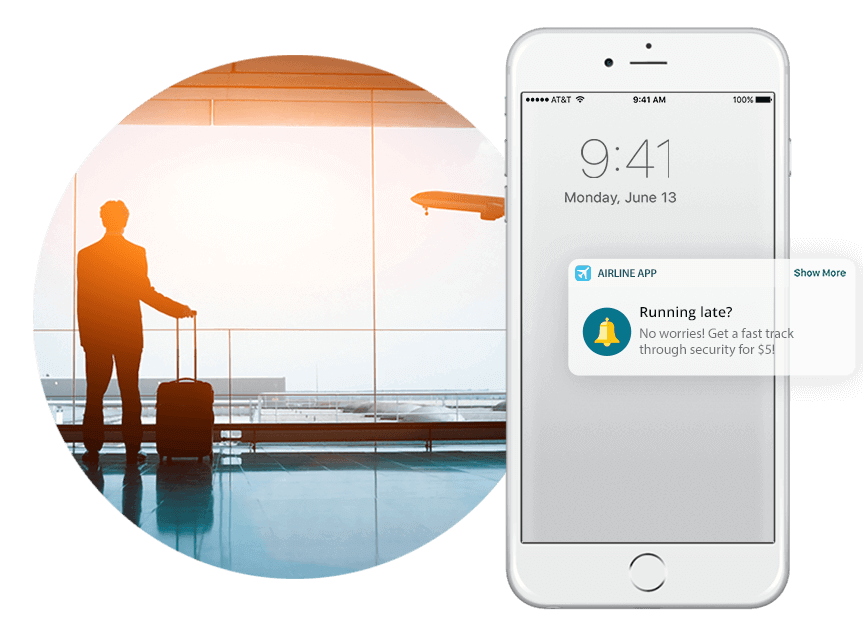

8. Conclusion
Attracting customers to retail stores or restaurants in the era of fledging eCommerce is also a daunting challenge. However, with an on-going pandemic, that challenge is increased greatly. With location-based marketing, you can at least try to attract and give incentives to customers who are near your business. The bottom line is these challenges all represent new opportunities. In 2021 prudent marketers will continue to invest wisely in location-based marketing because of its effectiveness and relevance. In summary, finding and being aware of what works and does not work is the core of any noteworthy campaign.
Team at Tectera, has sound knowledge on performing Social Media Marketing Sri Lanka based on location-based marketing. In addition, has numerous experiences developing mobile apps in Sri Lanka to make use of Google Maps API and Geo-Fence.
Leave a comment and let us know what you think on Location-based marketing.


Editorial Staff at Tectera are experts on web design, SEO, social media and other digital marketing channels.




